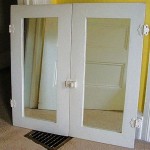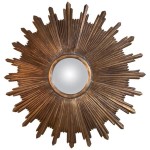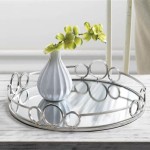Baroque Gold Mirrors: Reflecting Opulence and History
Baroque gold mirrors represent a powerful intersection of artistic style and functional design. Characterized by ornate detailing and lavish use of gold, these mirrors offer a glimpse into the grandeur and extravagance of the Baroque period (roughly 1600-1750) while continuing to serve as captivating decorative elements in contemporary interiors.
The Baroque era was a time of dramatic artistic expression, emphasizing movement, dynamism, and elaborate ornamentation. This aesthetic translated seamlessly into decorative arts, including mirror design. Baroque gold mirrors became symbols of wealth and status, adorning the palaces and grand homes of the aristocracy.
Gold, with its inherent association with luxury and divinity, played a central role in Baroque aesthetics. Gilding techniques, including gold leaf application and vermeil (gold-plated silver), were employed to create richly embellished frames. These frames often featured intricate carvings depicting scrolling acanthus leaves, cherubs, shells, and other motifs characteristic of the Baroque style.
The shape of Baroque gold mirrors also contributed to their opulent appearance. While rectangular and oval shapes were common, many mirrors embraced more complex forms, such as cartouches and elaborate, asymmetrical designs. These shapes further enhanced the sense of movement and dynamism central to the Baroque aesthetic.
The reflective surface of the mirror itself played a significant role in the overall Baroque design scheme. Mirrors were strategically placed to amplify light and create an illusion of spaciousness within grand interiors. The interplay of light reflecting off the gilded frame and the mirror's surface added to the overall sense of drama and opulence.
Creating authentic Baroque gold mirrors required highly skilled artisans. Carvers, gilders, and mirror makers collaborated to produce these intricate works of art. The process began with crafting the wooden frame, which was then meticulously carved with the desired Baroque motifs. Gilding was then applied, often involving multiple layers of gold leaf to achieve a rich, luminous finish.
The mirror plate itself was typically made of glass backed with a thin layer of metal, such as mercury or silver, to create the reflective surface. This process evolved over time, with advancements in mirror-making technology leading to clearer and more durable reflections.
Today, Baroque gold mirrors remain highly sought-after decorative pieces. Antique mirrors from the Baroque period are prized by collectors for their historical significance and artistic merit. These antique pieces offer a tangible connection to the past and can add a touch of historical grandeur to any space.
Reproductions of Baroque gold mirrors also enjoy considerable popularity. These reproductions offer a more accessible way to incorporate the opulent Baroque aesthetic into contemporary interiors. They are crafted using a variety of materials and techniques, ranging from hand-carved wood and gold leaf to more affordable resin and gold paint combinations.
When incorporating a Baroque gold mirror into a modern setting, it's essential to consider scale and placement. A large, ornate mirror can serve as a dramatic focal point in a living room, dining room, or entryway. Smaller Baroque mirrors can be used to add a touch of elegance to bedrooms, bathrooms, or hallways.
The surrounding décor should complement the mirror's ornate style. Baroque gold mirrors pair well with rich fabrics, such as velvet and damask, as well as antique furniture and decorative accents. However, they can also be used to create an interesting juxtaposition in more modern or minimalist spaces, adding a touch of ornate contrast.
The versatility of Baroque gold mirrors allows them to be incorporated into a variety of interior design styles. From traditional and classic interiors to more eclectic and contemporary spaces, these mirrors can add a touch of timeless elegance and historical charm.
Caring for a Baroque gold mirror requires attention to its delicate nature. Dusting with a soft cloth is recommended to maintain the shine of the gilding. Avoid using harsh chemicals or abrasive cleaners, which can damage the delicate gold finish. For antique mirrors, consulting a professional conservator is advisable for any significant cleaning or restoration needs.
Baroque gold mirrors represent a legacy of artistic craftsmanship and opulent design. Whether an antique original or a modern reproduction, these mirrors continue to capture the imagination, reflecting not only our image but also a glimpse into the grandeur of a bygone era.

Top Gold Baroque Wall Mirror Hamilton Hills

Wall Mirror Gold In Antique Baroque Bath Floor Vanity 56x46

Large Classic Baroque Gold Leaf Mirror Made In Italy Full

Ornate Mirror I Decorative Baroque Frame Gilt Mirrors Chiswick Decorexi A World Of Interiors

Large Ornate Gold Baroque Frame Mirror 24 X 36 Hamilton Hills

Baroque Mirror Gold Contact Us 0415213437

Large Classic Baroque Mirror Antique Gold Leaf Made In Italy New Zealand

Casa Padrino Baroque Mirror Gold Rectangular Wall With Elegant Decorations Cloakroom Style Furniture

Hamilton Hills 30x40 Gold Baroque Mirror Antique French Wall Decor 30 X 40 Harris Teeter

Baroque Wall Mirror Rococo Gold Leaf Antique Made In Italy Singapore








